Paul Manley Back Pain and RSI Clinic
Paul Manley, M.A.O.(Manip), Registered OsteomyologistFor muscle and joint problems

RSM (Royal Society of Medicine)
Specialist in the treatment of Musculo-skeletal problems
Location: 8-10 Boston Place, Marylebone, London NW1 6QH
Next to Marylebone Station, Main line trains and Bakerloo line
19/01/2026
Hip, upper thigh and groin related symptoms.
Often the pain that we associate with hip joint problems is not due to hip joint degeneration. Patients often arrive for a consultation having been informed by their doctor that they have a 'hip problem'. All too often the patients hip joints are quite healthy and yet they are suffering from pain and immobility around the hip and groin, sometimes affecting the knee area also.
In my experience such 'soft tissue' patterns which restrict movement are reversible, but if left without the proper physical therapy can lead to hip degeneration after many years. thus, such symptoms arising in the soft tissues are often precursors for hip problems later on and are best treated right from the beginning of this pathological process. Speciaised hip techniques which stretch, tone and deeply massage the affected structures will prevent the majority from progressive worsening.
Even when X-rays reveal pathology such as a loss of joint space in the hip, the condition can be helped greatly and reversed such that the space will increase and joint fluid essential for the health of the hip will return to a degree whereby the patient remains comfortable and fully functional for many years to come.
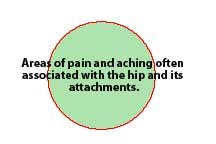
Below you will see illustrations of the most common areas of discomfort suffered.
Soft tissue patterns commonly associated and
mis-associated with the hip joint:
1. The lateral aspect.
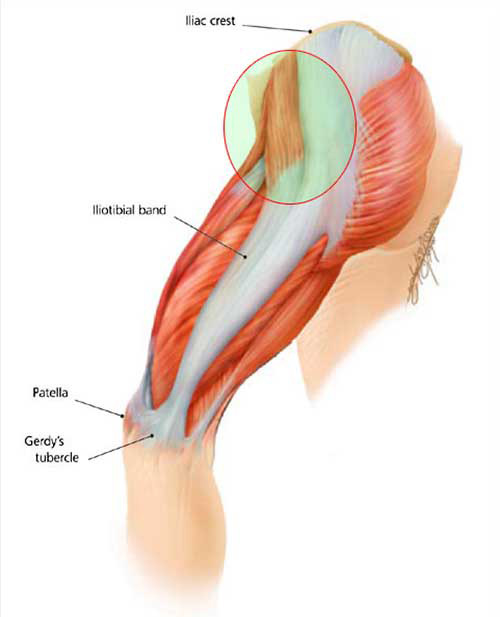
2. The posterior aspect.
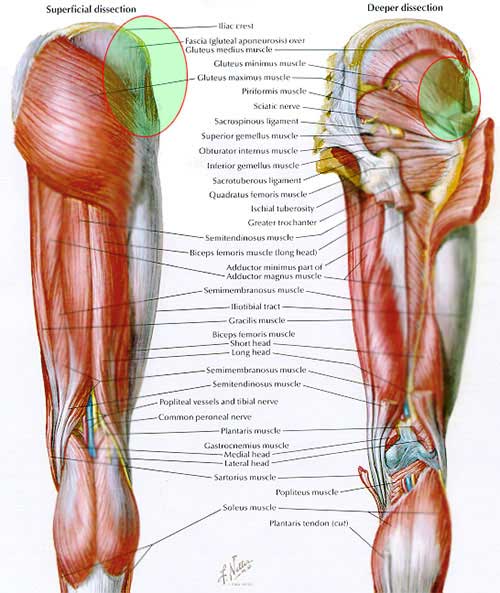
3. The anterior aspect.
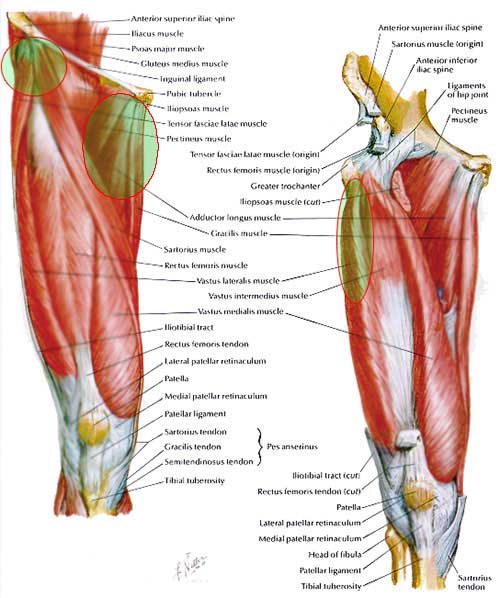
The hip joint at its worst ( see below ) becomes rigidified and very painful. If the condition reaches the degree of pathology below it is usually time for hip replacement. These days replacement surgery is very effective, and lasts much longer than when these operations first began in the late 60's. The main complication from such operations are thrombosis and especially lack of adequate aftercare whereby the soft tissue symptoms which often gave rise to the pain remain untreated. The patient at this point usually feels that the operation was a waste of time, but are very surprised and grateful when I have relieved their pain and immobility. Some operations, however, are miraculously effective for the sufferer.
4. Osteo-arthritic degeneration of the hip.
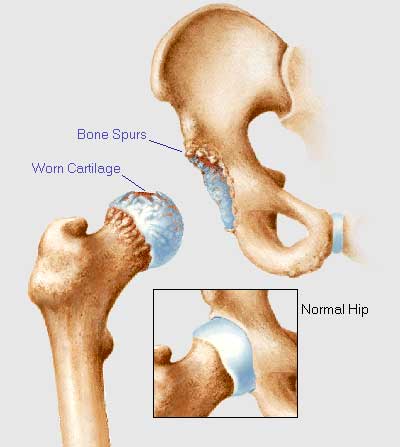
I hope that this information and the illustrations have been helpful to you. If you have any questions please contact me.
07925 616 753
Location: 8-10 Boston Place, Marylebone, London NW1 6QH
Next to Marylebone Station, Main line trains and Bakerloo line